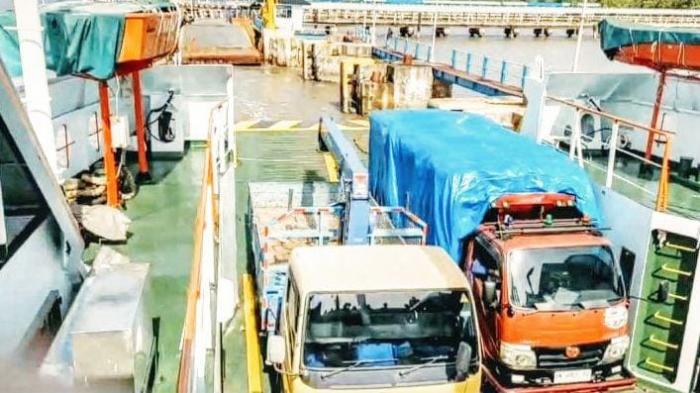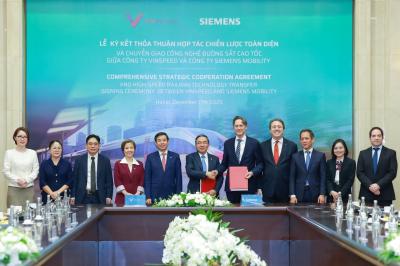APREA Expands Reach into Real Assets with Infrastructure Investments to Push Boundaries and Create New Opportunities in the Region
Administrator Rabu, 07 April 2021 14:25 WIB
APREA's rebranding celebrates 16 years of long-term industry advocacy with re-found purpose in "Driving the Future of Real Assets"
SINGAPORE - 7 April 2021 - APREA celebrates its 16th anniversary with the association's mission redefined: To promote growth in the real assets sector by being the voice of members in all policy matters, providing access to industry-advancing research and insights and connecting members to business opportunities.
Asia's economic transformation over the past 60 years has been unprecedented with the 21st century being described as the "Asian Century". Despite the pandemic turmoil, Asia remains the locus of future global growth, expected to boast the largest economies in the world including China, Japan, India and the ASEAN region in 2030 and beyond. Driven by demographic tailwinds, urbanization in the Asia Pacific is an epic boom that will drive the growth of its middle-class and with it, a cycle of rising consumption. Real assets are a play into the region's structural megatrends that will outlive the pandemic.
The Asian Century - Real Assets Growth
The Asian Development Bank estimates that the region will need to invest $26 trillion from 2016 to 2030 if the region is to maintain its growth momentum, eradicate poverty and respond to climate change – that works out to US$1.7 trillion a year to the end of the decade. Currently, only about US$900 million are estimated to be invested annually. In other words, if policies are conducive for the private sector to step in to fill this void, Asia Pacific provides an infrastructure investment opportunity of over US$8 trillion over the next ten years.
"Infrastructure is ultimately what translates the impact of urbanization into benefits for real estate. With the requirements needed by the rapidly developing economies that will eventually host more than half of the world's megacities, investments into infrastructure development in the Asia Pacific is a cycle that will be played out over decades," commented Mr. John Lim, Chairman of APREA, also Co-Founder & Deputy Chairman of ARA Asset Management Limited.
Infrastructure demand is expected to increase exponentially, thus, enabling sustainable financing of these massive projects to gain traction. And there will be opportunities for the private sector to participate, as many of the infrastructure initiatives align with ESG allocations, re-development, connectivity, and economic growth.
Economic Aspirations – The Key Regional Drivers
The economic ambitions of the region will provide the necessary impetus to power infrastructure spending and lift it out of the coronavirus slump.
China has announced plans to focus on developing "new infrastructure" to reach development targets. Key infrastructure investment plans announced for the next 5-7 years will require close to US$7 trillion. Bets are also placed on India's infrastructure sector. The Indian government, in its latest budget, has pledged to expand expenditure into its US$1.5 trillion infrastructure pipeline, creating financing institutions that can open the role of capital markets in infrastructure financing.
In Southeast Asia, ambitious infrastructure projects are happening across the region. President Duterte's "Build! Build! Build!" infrastructure plan in the Philippines is underway with 75 different projects expected to cost US$180 billion. In Indonesia, a high-speed rail system connecting the 140-km trip between Jakarta and Bandung is also being built.
"As it stands, Southeast Asia's US$2.4 trillion economy is the seventh-largest in the world and is forecasted to jump to fourth largest in Asia Pacific by 2050. Its workforce will grow by a further 60 million while its urban population is expected to rise by an additional 90 million by 2030. The reality is that ASEAN needs infrastructure development if it wants to sustain its economic growth," says APREA's Chief Executive Officer, Miss Sigrid Zialcita.
Plans to integrate the region's economies will also fuel another infrastructure boom. While China's Belt Road Initiative has undoubtedly headlined the effort to connect Asia, they are by no means alone. Japan articulated its own Partnership for Quality Infrastructure to expand funding in the region's infrastructure development. Infrastructure diplomacy programmes have also seen U.S. and Australia collaborate on infrastructure projects in the region. Similarly, the European Union has its own "Connecting Europe and Asia" strategy. All this points to an internationalization of capital in the Asia Pacific.
The Rise and Rise of REITs
Government policies in the region will continue to be conducive with significant efforts made by fast-growing countries to develop their own REIT regimes. Economies are in a race to secure their REIT future and significant momentum will be created as regulators strive to stay ahead of the game. Further growth of the asset class will also be propelled by the participation of the region's largest emerging economies. As the REIT movement accelerates in the region, the stock of institutionalized assets will continue to grow.
"Market capitalization of the region's REITs has risen from under US$6 billion at the dawn of the new century to over US$315 billion now[1]. There are significant drivers to contemplate that once China's and India's REIT markets are established and mature, Asia Pacific will sit as the Global REIT epicenter with total market capitalization to hit over US$1 trillion by the end of the decade, surpassing that of the US," said Miss Zialcita.
Massive Opportunities Ahead
By 2030, seven of the world's 10 largest megacities will be in the Asia Pacific. The region's urban population will expand by close to three billion. Increasingly, the region is emerging to be an investment hotspot for cross border investors. Additionally, the region remains a hot bed of construction activity and as its cities continue to grow, the fundamental demand for real estate and infrastructure will increase in tandem. As economic focus increasingly turns to longer-term recovery, infrastructure investments and REITs are a crucial part of this equation, to fast track the region's recovery from the pandemic and secure its economic future.
"The benefits of investing in institutionalized assets will be more evident as the world inches towards a post-pandemic future. Allocations to the region from global investors can only continue to rise and the securitization of the very assets so critical in driving its growth will be a massive investment opportunity. Asia Pacific remains primed to take advantage of this revolution in real assets. APREA's goal is to pave the way for the advancement of investment opportunities into the region's real assets," said Mr. John Lim. (*).
Berita Terkait
Komentar
0 Komentar
Silakan Login untuk memberikan komentar.
FB Comments





